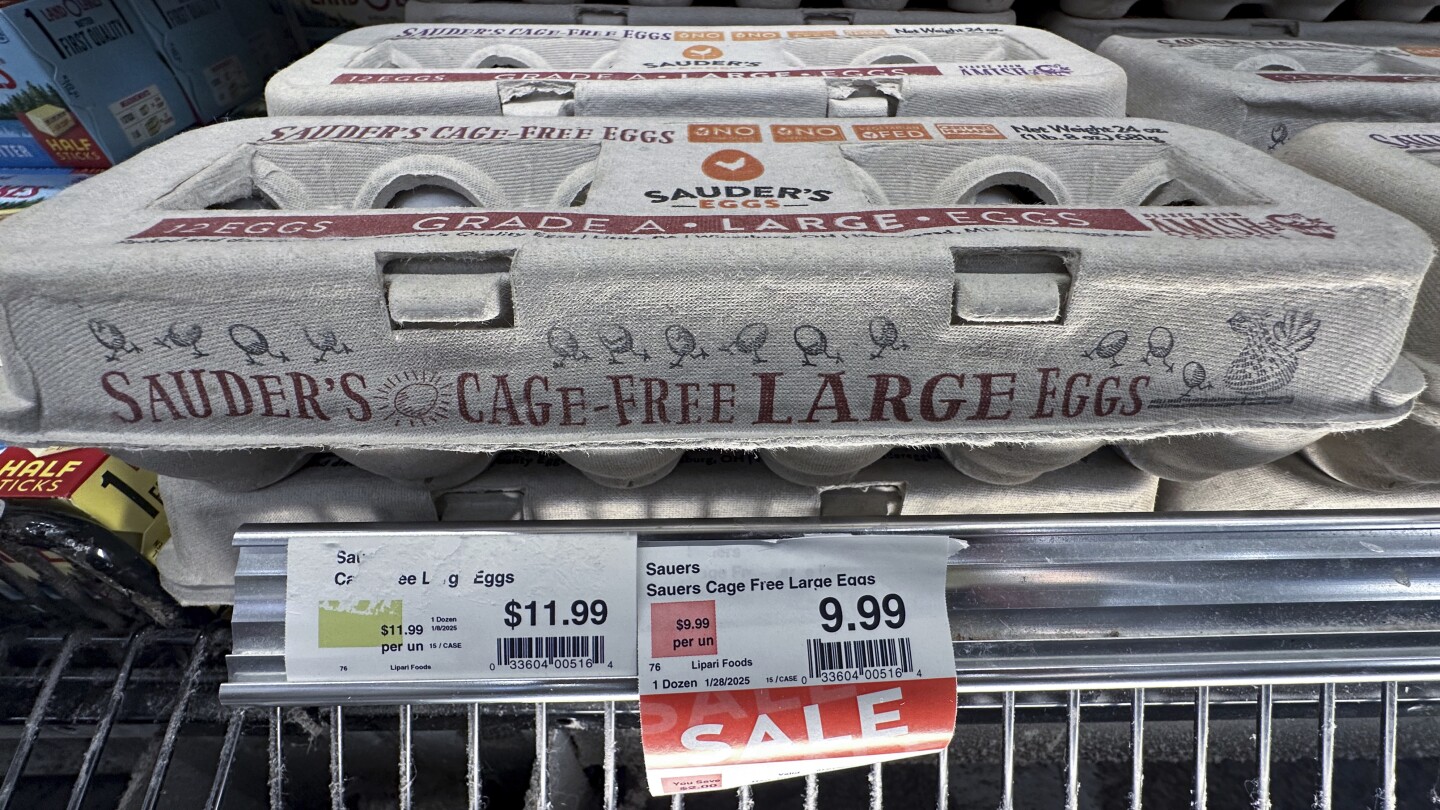OMAHA, Neb. (AP) — Egg prices have surged to record highs amid a bird flu outbreak, with critics accusing major producers of exploiting the situation to boost profits at the expense of consumers. Advocacy groups, Democratic lawmakers, and a Federal Trade Commission member are urging a government investigation after prices hit an average of $4.95 per dozen this month. While the Trump administration unveiled a plan to combat bird flu, its impact on easing egg prices, a key inflation driver, remains uncertain. “Donald Trump promised to lower food prices on ‘Day One’, but with egg prices skyrocketing out of control, he fired the workers charged with containing bird flu. Working families need relief now,” said Sen. Elizabeth Warren.
The bird flu outbreak has led to the slaughter of over 166 million birds, including 30 million egg-laying hens since January, significantly disrupting egg supplies. The Department of Agriculture’s policy of culling entire flocks when the virus is detected has reduced the national flock by about 12% from pre-outbreak levels. American Egg Board President Emily Metz insists the price surge is purely a supply issue caused by bird flu.
However, advocacy group Farm Action suspects monopolistic practices, noting that despite only a 4% drop in egg production and 7.57 billion eggs produced last month, some grocery shelves remain empty. “Dominant egg corporations are blaming avian flu for the price hikes that we’re seeing. But while the egg supply has fallen only slightly, these companies’ profits have soared,” said Angela Huffman, Farm Action’s president.
Cal-Maine Foods, the largest egg producer supplying 20% of the nation’s eggs, reported a $219 million profit in the latest quarter, up from $1.2 million before the outbreak. CEO Sherman Miller attributed the profit spike to restricted egg supplies due to bird flu outbreaks. However, Cal-Maine also increased sales volumes through acquisitions and experienced fewer outbreaks on its farms.
Economists caution that record prices don’t necessarily indicate price gouging. Rising feed, fuel, and labor costs, along with investments in biosecurity, have driven up production costs. Once a flock is culled, it can take up to a year to restore operations, leaving farmers without income despite USDA compensation. “This isn’t a case where they’re taking the price up to gouge the market. It is the price is going up through auction at wholesale. And they’re benefiting from higher prices because supplies are tight,” said University of Arkansas agricultural economist Jada Thompson.
— news from The Associated Press
